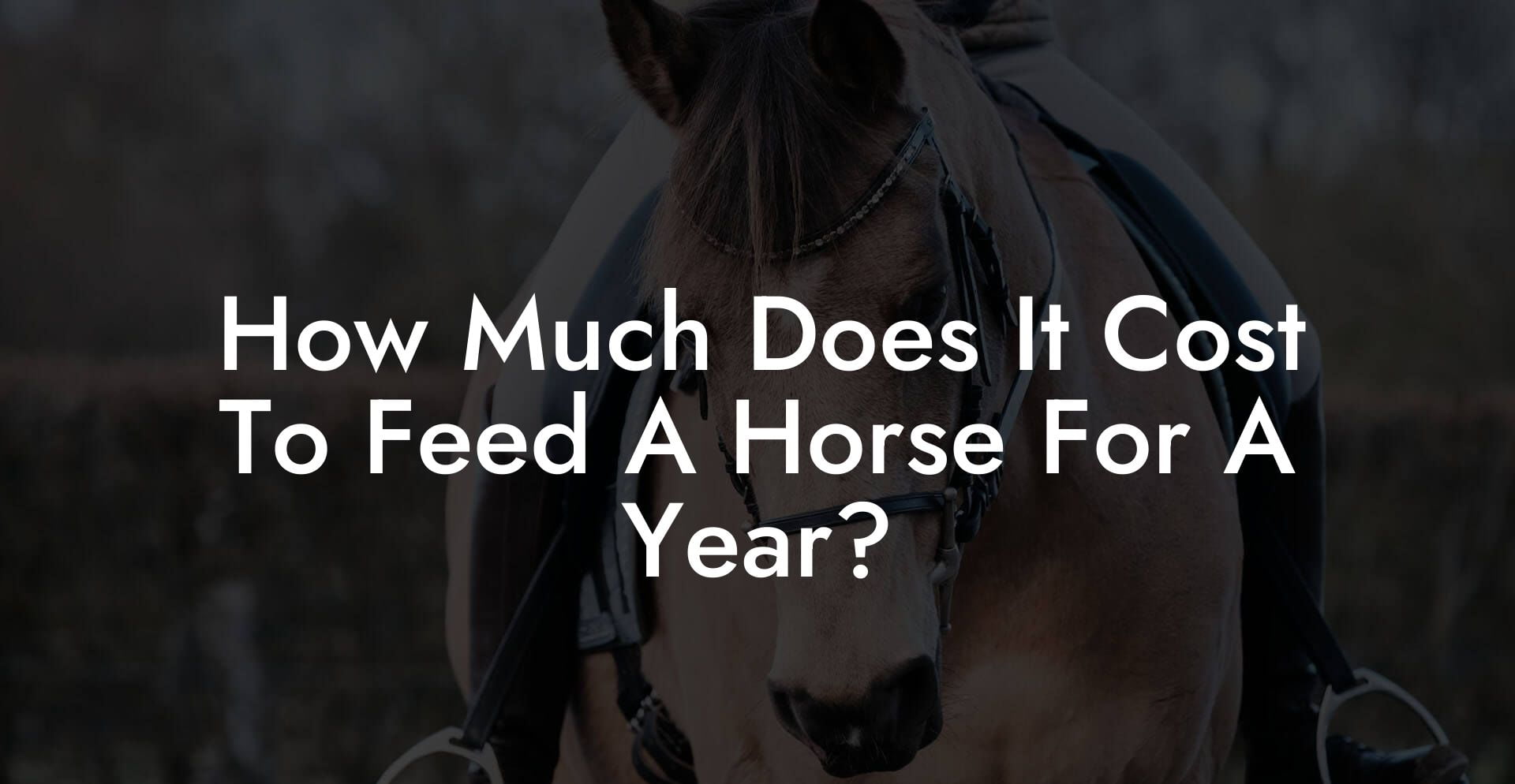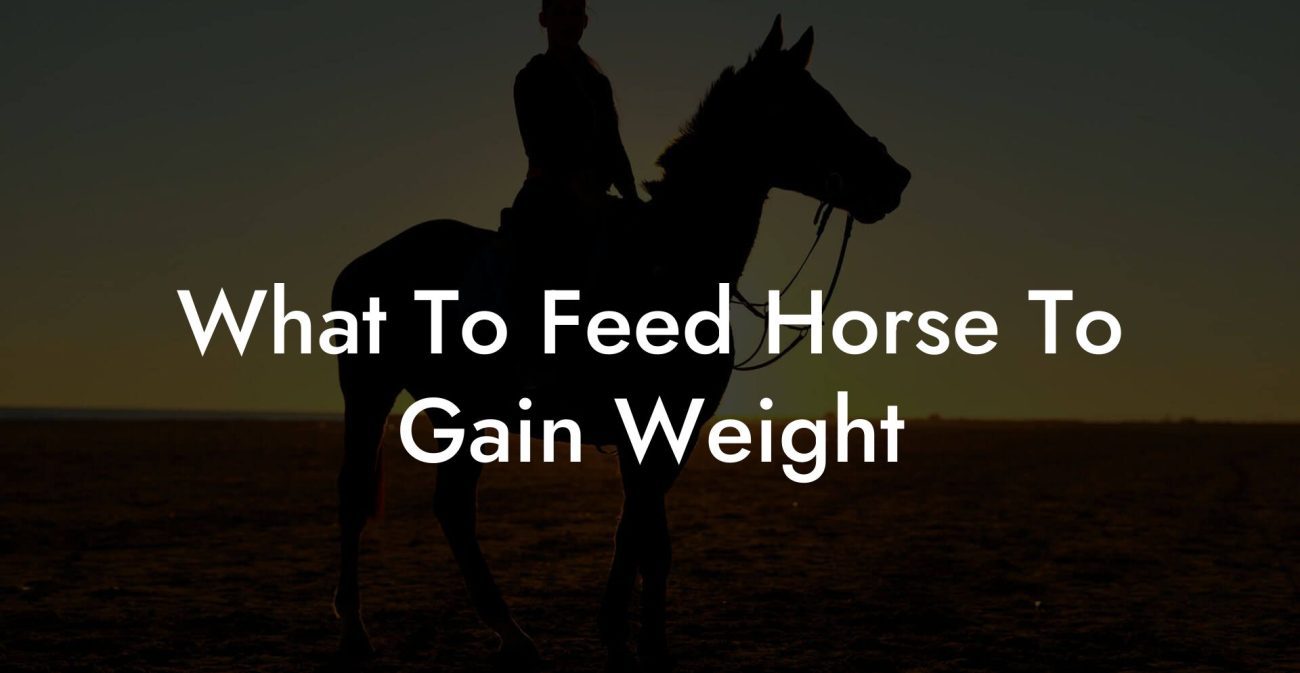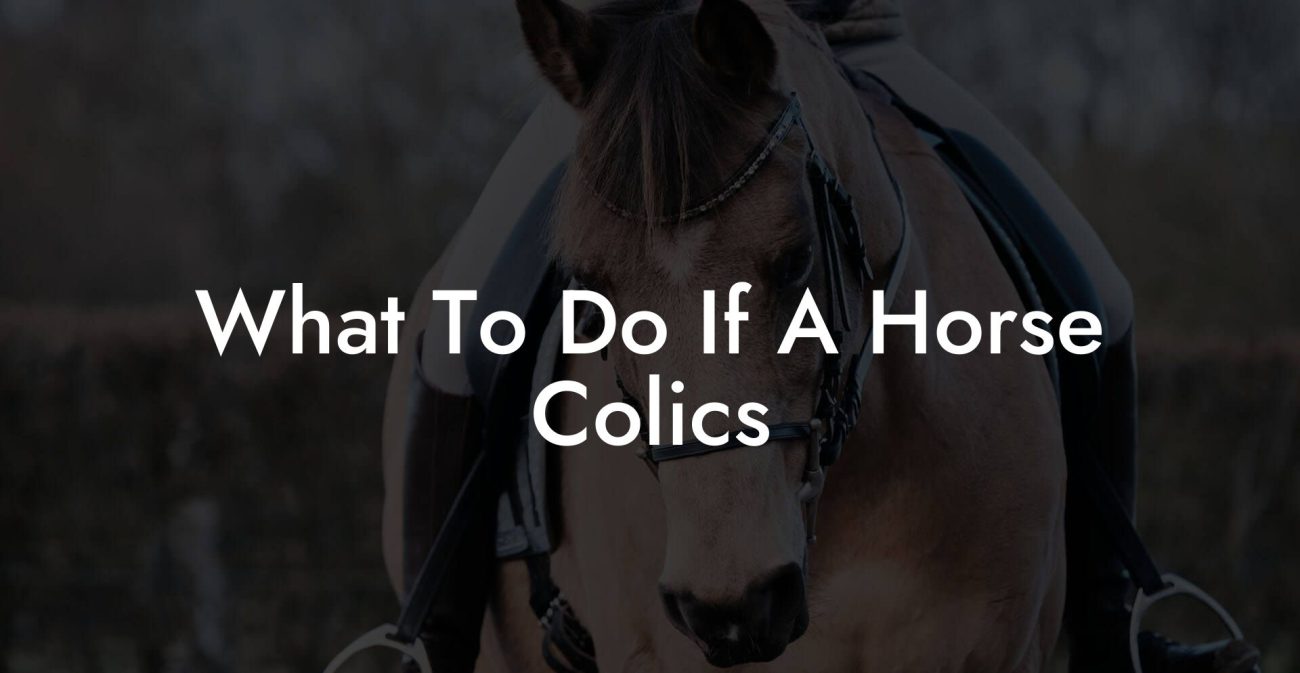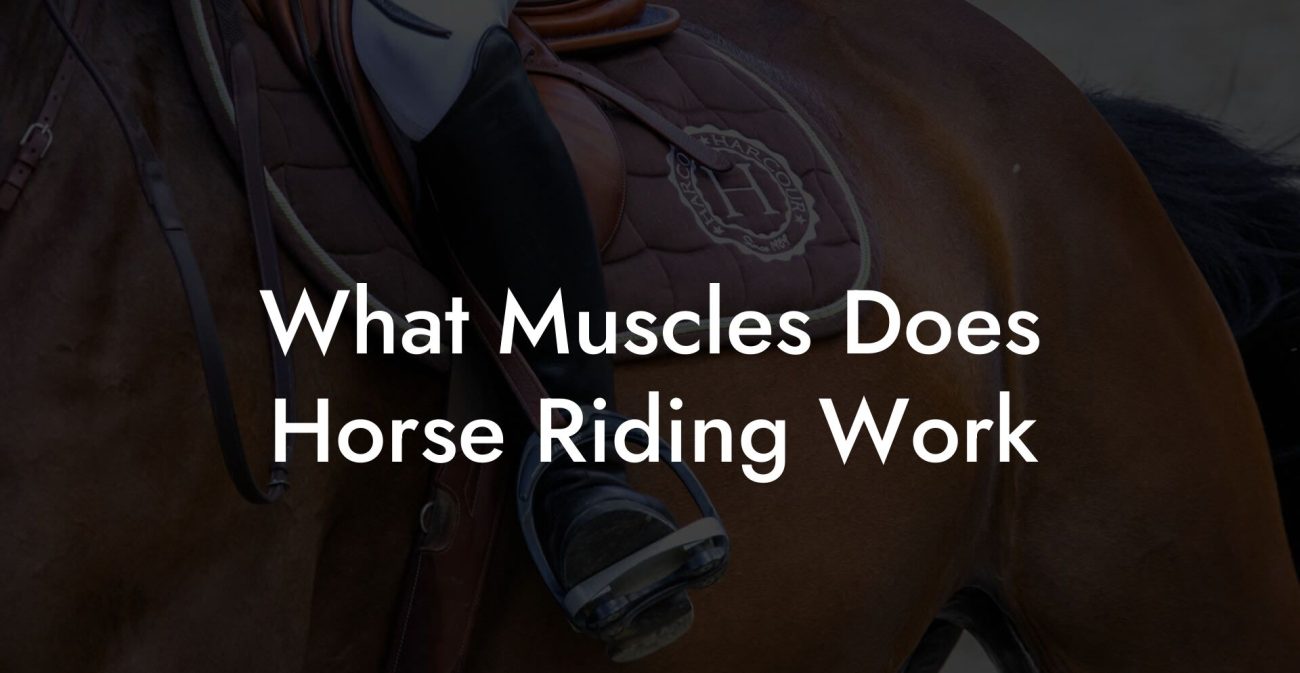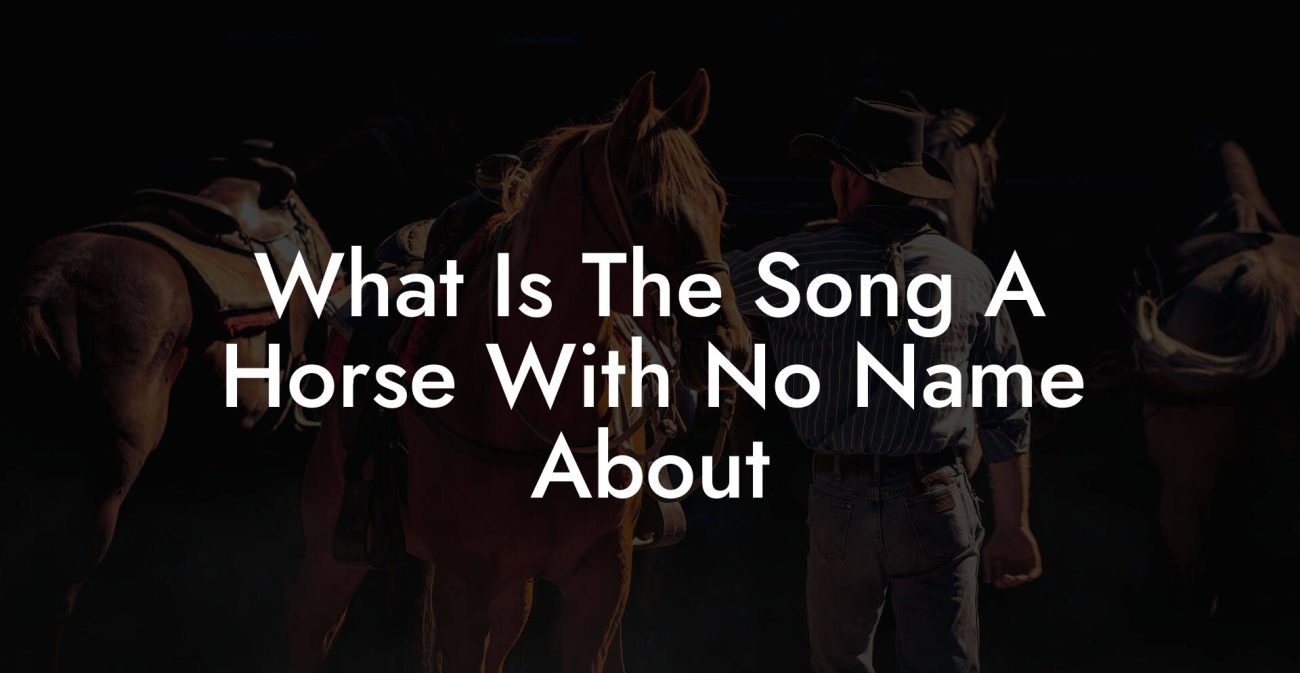Ever wondered what it really takes to feed a majestic steed for an entire year? Grab your saddle and your sense of adventure, because we’re about to gallop through the ins and outs of horse feeding costs with a twist of Gen-Z sass and millennial practicality. In this guide, we’re cutting through the haystack of confusing numbers and mysterious expenses to serve up an honest, down-to-earth breakdown of exactly how much you can expect to spend on feeding a horse annually. Whether you're a budding equestrian, a seasoned horse owner, or just wildly curious about the economics of equine care, this article is your ultimate resource for all things horse feed budgeting.
Quick Links to Useful Sections
- Diving Into the World of Equine nutrition and Costs
- Factors Influencing the Annual Cost to Feed a Horse
- 1. Size and Weight of Your Horse
- 2. Activity Level and Workload
- 3. Type and Quality of Feed
- 4. Seasonal Variations
- 5. Location and Availability
- 6. Special Dietary Needs and Supplements
- The Breakdown: What Does It Really Cost?
- Hay and Forage
- Concentrates and Grains
- Supplements and Vitamins
- Treats, Salt, and Miscellaneous Items
- Navigating the Market: Seasonal and Local Price Fluctuations
- Seasonal Trends and Buying in Bulk
- Local Versus National Trends
- Quality Over Quantity: The Importance of Nutrient-Dense Feeds
- Budgeting Tips and Money-Saving Strategies for Horse Owners
- 1. Bulk Buying and Seasonal Storage
- 2. Homegrown Forage Options
- 3. Regular Health Check-Ups
- 4. Feed Analysis and Customization
- 5. Online Deals and E-commerce
- Comparing Different Feed Options: Hay, Grains, and Complete Feeds
- High-Quality Hay
- Concentrated Grains and Pelleted Feeds
- Complete Feeds and Supplements
- Case Studies: Real-Life Experiences with Equine Feeding Costs
- Case Study 1: Budget-Savvy Barn Owner
- Case Study 2: Premium Feeding for Performance Horses
- Resources and Community Support: Your Next Steps in Equine Care
- DIY Equine Feed Management Tools and Apps
- FAQs: Your Top Questions About Feeding a Horse for a Year
- Wrapping It All Up: Your Annual Horse Feed Adventure
Diving Into the World of Equine nutrition and Costs
Feeding a horse isn’t as simple as slapping some oats in a bucket and calling it a day, although oats are definitely a part of the mix. Just like us, horses need a balanced diet to stay healthy, energetic, and ready to kick up their heels. From high-quality hay and grains to essential supplements and occasional treats, the cost of feeding a horse can vary widely based on a plethora of factors. In today's guide, we'll break down these factors, offer some budgeting hacks, and provide insights into how you can optimize your equine feeding regimen without breaking the bank.
With rising feed prices and fluctuations in the agricultural market, understanding the variables that affect your annual horse feed bill is key. Whether you’re riding high on a tight budget or have a little extra carrot money to spare, our comprehensive guide will help you navigate the field of equine nutrition with confidence, clarity, and just a hint of humor.
Factors Influencing the Annual Cost to Feed a Horse
Before we crunch the numbers, let’s gallop through the various factors that determine the total cost of feeding a horse for a year. The price tag can depend on a multitude of reasons, and understanding these can help you lower costs or adjust your horse’s diet for a healthier, happier life.
1. Size and Weight of Your Horse
Just like your favorite gym buddy, a larger or heavier horse requires more food. A giant warmblood might need significantly more calories and bulkier feeds than a petite pony. Think of it as the difference between a small coffee and a supersized latte – the size matters!
2. Activity Level and Workload
Horses that are actively working, competing, or used in sports will require more energy-dense feeds to fuel their performances. For a leisurely trail ride, the cost can be much lower compared to competitive racehorses or show jumpers who have intensive nutritional needs.
3. Type and Quality of Feed
Not all hay is created equal! Premium, nutrient-rich hay, organic grains, or specially formulated pelleted feeds come at a higher cost, much like your organic vegan latte compared to a regular brew. The right balance of fiber, protein, vitamins, and minerals is crucial for your horse’s health, but quality does come at a price.
4. Seasonal Variations
The cost of hay and other feeds often depends on the time of year. During winter or drought seasons, feed prices can skyrocket due to supply shortages. Planning ahead and possibly buying in bulk during off-peak times can help mitigate these spikes.
5. Location and Availability
Depending on where you live, local feed prices can vary widely. Rural areas may offer lower prices due to local production, whereas metropolitan or suburban areas might have higher mark-ups. Always keep an eye on your local feed market trends!
6. Special Dietary Needs and Supplements
Some horses require additional supplements such as vitamins, joint support formulas, or electrolyte mixes, especially if they have unique health issues or are performing at high levels. These extras can add a significant line item to your annual equine budget.
The Breakdown: What Does It Really Cost?
Let’s break it down, how much does it really cost to feed a horse for a year? We’re talking about a combination of hay, grains, supplements, and the occasional treat. While the numbers can fluctuate, here’s a ballpark estimate to help you budget:
Hay and Forage
Hay is often the cornerstone of a horse’s diet, making up about 70-80% of their dry feed intake. On average, a horse eats around 15-20 pounds of hay per day. Depending on quality and location, hay can range from $0.05 to $0.15 per pound. Do the math, and if you’re feeding your horse 15 pounds a day, that’s roughly $1 to $2.25 per day, or about $365 to $821 per year.
Concentrates and Grains
Concentrates like oats, barley, or specially formulated pellets are typically fed in smaller quantities compared to hay but still add to your overall costs. Expect to pay between $0.10 and $0.40 per pound. For a horse requiring 5-10 pounds a day of concentrates, you’re looking at roughly an additional $200 to $1,500 for the year.
Supplements and Vitamins
Supplements can be a tricky calculation because they vary so widely based on your horse’s individual needs. Whether it’s joint support, digestive aids, or overall vitamins, expect to allocate anywhere from $100 to $500 a year. These are especially vital for horses with a high workout routine or older horses dealing with age-related issues.
Treats, Salt, and Miscellaneous Items
Let’s not forget the fun stuff, a few treats, salt blocks, and other little extras. These might not break the bank individually, but collectively they can add another $50 to $200 annually. After all, every horse deserves a little indulgence now and then.
Altogether, on the lower end, you might spend around $700-$1,500 per year if you’re operating a lean, budget-friendly regimen. On the higher end, with premium hay, high-quality grains, and top-of-the-line supplements, your costs can easily range from $2,000-$3,000 or more per horse per year.
Of course, these numbers are just averages. Real-world scenarios depend heavily on the individual horse’s size, activity level, and overall health.
Navigating the Market: Seasonal and Local Price Fluctuations
Just as your favorite food truck might have a sizzling special during summer, the cost of horse feed isn't static. Seasonal changes, weather conditions, and local supply-demand dynamics can cause significant fluctuations in feed prices.
Seasonal Trends and Buying in Bulk
During the lush summer months, you’re likely to find a surplus of fresh, high-quality forage, leading to more reasonable prices. Conversely, when winter winds blow or drought strikes, the cost of hay goes up, sometimes dramatically.
One savvy tip? Consider buying in bulk during off-peak times or partnering with local stables to secure a better rate. Not only does this help stabilize your budget, but it also encourages a sense of community among local equestrians.
Local Versus National Trends
The regional market can behave very differently from the national average. For instance, if you’re in a region with a robust agricultural community, you might enjoy slightly lower prices or even homegrown options. Meanwhile, regions with less access to fresh forage could face higher costs due to transportation fees and limited availability.
Stay informed by keeping an eye on local feed stores, talking to other horse owners, and monitoring online forums and social media groups dedicated to equine care.
Quality Over Quantity: The Importance of Nutrient-Dense Feeds
It might be tempting to go for the cheapest feed available, but when it comes to your horse’s health, quality should never be compromised. Nutrient-dense feeds ensure your horse gets the proper balance of fiber, protein, vitamins, and minerals they need to thrive.
High-quality hay, for example, might cost a bit more, but its superior nutritional profile means your horse’s digestive system works more efficiently, their coat shines brighter, and their overall performance improves. Investing in the right feed upfront can help avoid costly health issues down the line.
Moreover, a well-balanced diet contributes to better weight management, reduced vet bills, and a more joyful, energetic companion, factors that millennials and Gen-Z horse enthusiasts alike will appreciate as they navigate the rewarding world of horse care.
Budgeting Tips and Money-Saving Strategies for Horse Owners
While the cost of feeding a horse can be significant, there are plenty of clever strategies to help you manage and even reduce your annual feed bill without compromising on quality.
1. Bulk Buying and Seasonal Storage
One of the most effective strategies is buying in bulk during seasonal lows. Establish relationships with local farmers and feed suppliers, and stock up on hay and grain when prices are at their most favorable.
2. Homegrown Forage Options
If you have a bit of land, consider growing your own hay or forage. Not only does this help cut down on recurring feed expenses, but it also ensures your horse is getting fresh, organically grown feed. It’s a win-win for both your wallet and your equine friend.
3. Regular Health Check-Ups
Keeping your horse in top shape can help reduce the need for expensive supplements or special feeds. Regular veterinary check-ups and dental care ensure your horse efficiently utilizes the nutrients from their food.
4. Feed Analysis and Customization
Consider periodic feed analysis to ensure your horse is receiving exactly what they need. Tailoring the feeding regimen can prevent overfeeding or underfeeding, thus avoiding unnecessary expenses on supplements or additional feeds.
5. Online Deals and E-commerce
With today’s digital boom, e-commerce platforms offer competitive prices on horse feeds and supplements, often with bulk discounts or seasonal promotions. Always compare prices online and check for special offers to optimize your spend.
Employing these strategies can transform your approach to horse nutrition budgeting, leaving extra funds in your pocket for that much-needed grooming session or a spontaneous trail ride.
Comparing Different Feed Options: Hay, Grains, and Complete Feeds
Not all feeds are created equal, and the type you choose can make a significant impact on both your horse’s health and your wallet. Let’s compare a few popular feed options:
High-Quality Hay
As the staple of your horse’s diet, high-quality hay, whether timothy, orchard grass, or alfalfa, provides the essential fiber needed for healthy digestion. While it may cost a bit more than lower-grade options, the benefits of sustained energy levels and improved gut health often outweigh the extra expense.
Concentrated Grains and Pelleted Feeds
Concentrates are excellent for horses with high energy demands. Pelleted feeds that include a mix of grains, vitamins, and minerals offer convenience and consistent nutritional value. However, if not balanced correctly with hay, overly concentrated feeds can lead to digestive issues.
Complete Feeds and Supplements
These are specially formulated diets designed to give your horse all the necessary nutrients in one package. While complete feeds are convenient, especially for young, growing horses or those with special dietary requirements, they come at a premium. Always consider your horse’s specific needs before committing to a complete feed regimen.
Weighing the pros and cons of each option and sometimes mixing types of feed can help achieve the right nutritional balance while keeping costs under control.
Case Studies: Real-Life Experiences with Equine Feeding Costs
Nothing brings theory to life like hearing real stories from fellow horse enthusiasts. Let’s take a look at a couple of case studies that illustrate varying budgets and feeding strategies:
Case Study 1: Budget-Savvy Barn Owner
Jessica, a passionate millennial equestrian, runs a small stable on a limited budget. By buying hay in bulk during the off-season, growing a portion of her own forage, and carefully analyzing her horses’ dietary needs, she has managed to keep her annual feed costs around $1,200. Jessica’s story highlights the benefits of being proactive and resourceful, proving that with a little planning, feeding quality horses doesn’t have to drain your bank account.
Case Study 2: Premium Feeding for Performance Horses
On the other end of the spectrum is Mark, whose high-performance show jumper commands nothing but the best nutrition. Investing in premium, organic hay, specialized concentrates, and high-grade supplements, Mark’s yearly feed bill comes in at nearly $3,000. While the cost is higher, Mark sees these expenses as insurance against injuries and performance issues, demonstrating that sometimes, top-tier feed can be an investment in long-term competitive success.
These case studies remind us that while the numbers can vary, the key is matching your feed strategy to your horse’s unique needs and your financial situation.
Resources and Community Support: Your Next Steps in Equine Care
Stepping into the world of equine care is as exciting as it is challenging, and no one should have to navigate it alone. Here are some resources and community tips to keep you informed, connected, and savvy about your horse feeding expenses:
- Local Feed Stores and Agricultural Extensions: Build a relationship with your local suppliers and agricultural extension services to stay updated on seasonal trends and bulk purchase opportunities.
- Online Communities and Forums: Platforms like The Horse Forum, Reddit’s r/equestrian, and various Facebook groups are treasure troves of firsthand advice and local feed deal insights.
- Veterinary Nutritionists and Equine Dietitians: Consulting professionals can help tailor a feeding plan that maximizes nutrition while aligning with your budget.
- Equestrian Events and Workshops: Attend seminars, workshops, and local horse shows where you can network with other enthusiasts and learn about innovative, cost-effective feeding strategies.
- Newsletters and Blogs: Subscribe to reputable equine care blogs and newsletters that regularly feature updates on feed prices, new nutritional research, and practical tips for horse owners.
Taking advantage of these resources not only helps you stay on top of your horse’s nutritional game but also connects you with a supportive community of like-minded horse lovers ready to share their tips, tricks, and inspirational journeys.
DIY Equine Feed Management Tools and Apps
In today’s digital era, managing your horse feeding budget can be as simple as downloading a handy app. There are numerous mobile apps and digital tools designed specifically for equestrians that help track feed inventories, calculate nutritional needs, and even predict seasonal price changes in your area.
Using these tools can save you time, minimize waste, and ensure that you’re always one step ahead in your horse nutrition game. With features ranging from expense tracking to nutritional calculators, these apps are a must-have for any modern, tech-savvy horse owner.
FAQs: Your Top Questions About Feeding a Horse for a Year
Got questions about the intricacies of feeding your equine companion? We’ve compiled some of the most frequently asked questions to help clear up any confusion and ensure you’re well-equipped to manage your horse’s diet.
1. How much hay does my horse need daily?
On average, a horse requires about 15-20 pounds of hay per day, depending on its size, activity level, and overall nutritional requirements.
2. What is the estimated annual cost for hay alone?
Given the variability in regional prices, the annual cost for hay can range from approximately $365 to over $800 per horse.
3. How do seasonal changes affect feed costs?
Seasonal variations, such as droughts or winter scarcity, can significantly increase feed prices. Buying in bulk during off-peak seasons can help offset these spikes.
4. Are premium feeds worth the extra cost?
Premium feeds often provide a balanced nutritional profile tailored for performance, growth, or specific health needs, which can lead to better overall health and lower long-term expenses.
5. What are some effective cost-saving strategies when feeding horses?
Cost-saving strategies include buying in bulk, growing your own forage, utilizing online deals, and regularly consulting with equine nutrition experts for tailored advice.
6. Can I mix different types of feed to save money?
Yes, often a balanced combination of high-quality hay, supplemented with concentrates and occasional treats, proves effective both nutritionally and economically.
7. How do I adjust feeding costs based on my horse’s workload?
Horses with higher energy needs due to intense physical activity require more concentrated feeds and calories, so adjustments should be made in response to increased workload.
8. Are there mobile apps available to help track feed expenses?
Absolutely. Many equine management apps allow you to track feed inventories, expenses, and nutritional needs, helping you maintain a tight budget.
Wrapping It All Up: Your Annual Horse Feed Adventure
Feeding your horse isn’t just about putting food in a bucket, it’s an intricate balance of nutrition, budgeting, and lifestyle that fuels your equine companion’s performance and happiness. As you navigate the wonderful world of horse care, always remember that understanding the costs and investing wisely in quality, nutrient-rich feeds will pay dividends in your horse’s overall health, longevity, and performance.
Whether you’re managing a modest budget or splurging on premium feeds, each decision you make is a step toward a healthier, happier equine friend. Embrace the journey with curiosity, be prepared to adapt to seasonal shifts, and don’t be afraid to tap into the wealth of community knowledge available both online and locally.
Your adventure into equine nutrition is as dynamic and spirited as the horses you love. With the guidance and ideas shared here, you’re well on your way to mastering the art (and economics) of feeding a horse for a year. So saddle up, keep your eye on the carrot (or hay bale), and trust that each carefully planned meal is a building block for a thriving, robust companion.

